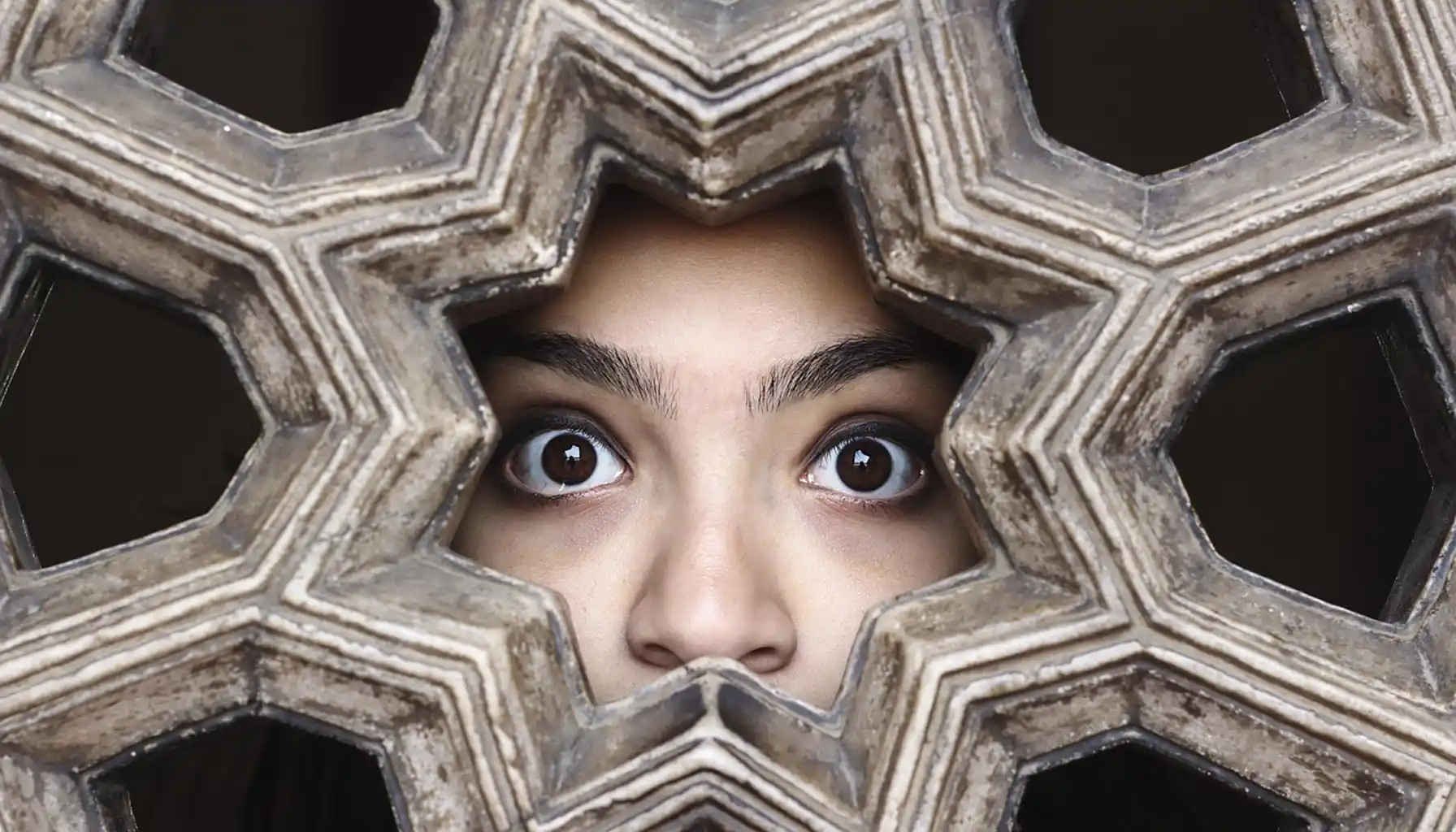Cleithrophobia: How to Manage the Fear of Being Trapped

Contents:
No escape. No place that feels safe. We pay the debt of our own minds, being trapped in a cycle of racing hearts, shallow breaths, and the grim thought: “What if I cannot get out?” The sense of panic may come out of the blue, triggered by a closed door, a crowded elevator, or even a memory hidden in the darkest corners of our cognition. It is a primal fear, and it has a rather distinct name – cleithrophobia.
Cleithrophobia has long been studied as a specific anxiety disorder, whose influences may include a combination of evolutionary survival instincts and personal experiences that condition the mind to fear confinement.
Let us find a proper cleithrophobia definition, examine its symptoms and risk factors, and delve into cognitive training techniques that may help one regain a sense of control and never fall into the trap of phobias again.

What is Cleithrophobia?
Sometimes, phobias have peculiar names, and cleithrophobia is no exception. As such, the name of a fear of being trapped in a public space derives from two Greek words: kleisto, meaning “closed”, and phobos, meaning “fear” or “aversion”. Together, they reveal the true cleithrophobia meaning: the intense, irrational dread of confinement, even in situations where escape is apparently possible. However, the absence of a rational cause is the main characteristic of all specific phobias known.
As a rule, this mental impairment (if we can say so) often overlaps with other anxiety-related fears, including claustrophobia, i.e., the fear of small or enclosed spaces, and aerophobia, i.e., the fear of flying. And even though each phobia should have its own triggers and means of manifesting, the common thread is a heightened sense of vulnerability and inextirpable fear of losing control when escape is possible but not immediately attainable.
Common Cleithrophobia Symptoms to Be Aware Of
What is the fear of being trapped? Well, it is more than just a thought in your mind or trembling in your limbs. It is a composite distress that affects both the mind and the body, with numerous types of manifestations that differ from person to person. So does the intensity, too. Nevertheless, there is one common feature that unites all of them – they usually appear suddenly, without any warning or preceding signs.
Category | Symptoms |
Physical | Dizziness, fainting, vertigo, rapid heartbeat, chest tightness, hot or cold flashes, nausea, vomiting, gastric disturbances, sweaty palms, tingling sensations |
Emotional | Overwhelming anxiety, panic, fear of losing control, sense of impending doom, fear of embarrassment or humiliation |
Cognitive | Intrusive thoughts of being trapped, “movie-like” mental reels, out-of-body experiences, obsessive planning for escape, difficulty concentrating |
Remember that the presence of other mental health conditions or stressors can intensify these symptoms and impact the way they manifest.
Cleithrophobia Causes and Risk Factors
Just like any other phobia, this variety cannot "boast" a single, clear cause. Instead, it usually comes from different channels of biological, psychological, and environmental types. So, what does cleithrophobia mean in terms of its origins?
Evolution
From the evolutionary perspective, humans naturally tend to avoid potentially dangerous environments, for over thousands of years, they had to battle for their dominance and freedom from other species. Being trapped or confined has always meant death, and being set free was the eternal goal.
This survival mechanism explains why fears of enclosed spaces, heights (i.e., acrophobia), and other potentially hazardous scenarios are common, even when the actual risk is minimal in modern life.
Trauma and Past Experiences
A history of trauma, particularly experiences involving preceding confinement, usually significantly increases the likelihood of developing cleithrophobia. Moreover, one should not underestimate the consequences of post-traumatic stress disorder (PTSD), which cannot pass without a trace but makes a person more sensitive to triggers related to confinement.
Genetic and Biological Factors
Some studies suggest that genetics may serve as a fruitful background for the generational phobias to arise. Differences in brain chemistry, heightened stress responses, and overactive fear-processing pathways can contribute to an exaggerated sense of danger when confronted with confined spaces. By the way, genetic anxiety falls under the same rule, too.

Claustrophobia and Cleithrophobia: The Key Differences
Within the realm of psychology and psychiatry, claustrophobia and cleithrophobia may sometimes be confused due to their almost similar names and their shared association with confinement. Yet, though they do have certain aspects in common, these do not refer to the same condition.
Claustrophobia is the fear of small or enclosed spaces, such as elevators, tunnels, or windowless rooms. The main trigger is the space itself, rather than the concept of confinement.
Cleithrophobia, on the other hand, is specifically the fear of being trapped or unable to escape. The size of the space does not really matter, for what triggers the phobia is the perception of entrapment itself.
Aspect | Claustrophobia | Cleithrophobia |
Primary Fear | Small or enclosed spaces | Being trapped or unable to escape |
Trigger Example | Elevators, tunnels, tight rooms | Locked doors, seatbelts, physical restraints |
Space Size Relevance | Critical. The space must feel small or enclosed | Irrelevant. The fear stems from entrapment, not space size |
Emotional Focus | Fear of the environment itself | Fear of losing control and not being able to get out |
Managing Cleithrophobia at Home
Although severe cases may easily be mitigated via professional therapy, those who suffer also find that self-help methods help them deal with their fears on a daily basis. Since this article is not intended to provide medical advice and a clinical way of cleithrophobia treatment, we shall provide one with the following strategies that focus on safe approaches practiced at home.
Breathing and Relaxation Techniques
Panic always goes hand in hand with shallow, rapid breathing that intensifies feelings of suffocation. So as to break this cycle, try practicing deep, controlled breathing techniques, such as diaphragmatic breathing or the 4-7-8 method, to slow the heart rate and calm the nervous system.
Mindfulness and Grounding
Mindfulness meditations have long been considered helpful, for they can reduce the likelihood of intrusive thoughts about confinement. Apart from it, one should not neglect the grounding technique (like naming five things you can see, four you can touch, three you can hear, two you can smell, and one you can taste) to redirect their attention away from fear, toward reality.
Cognitive Training
What is more, mental flexibility cannot be fostered on its own. In turn, anyone concerned should spend more time doing cognitive exercises to focus on improving skills like memory, attention, and logical reasoning, i.e., everything that can support clearer thinking in stressful times.
Mind Elevate is among the most innovative and trusted apps on the market, as it offers more than 35 brain-training games across categories such as memory, logic, math, attention, and even musical perception. Emotional sobriety, intelligence, and flexibility are necessarily strengthened through regular practice, so do not neglect your chance to break free.

See also: Spin the Emotion Wheel: A Therapist’s Guide
Gradual Exposure
Avoiding is not the option – gradual exposure is. While the first only brings short-term relief (and reinforces the phobia over time), the latter option involves facing less threatening scenarios first and slowly progressing toward more challenging situations. The result is the growing tolerance and confidence in places you visit and “the feelings you feel”.
Cognitive Reframing
The worst will happen – this is what one may think. Nonetheless, it is not true. So as to reduce the intensity of the intrusiveness, try journaling fearful thoughts and then challenging them with rational counterstatements.
Disclaimer: These strategies are meant for self-management and general well-being. They are not a substitute for professional treatment. If cleithrophobia significantly disrupts daily life or leads to severe distress, please consult a qualified mental health professional or the psychologist you trust.
Your mind is capable of growth and change. Take your time, explore what you are dealing with, and rest assured: everything is possible with the right tools and support by your side. Good luck!





